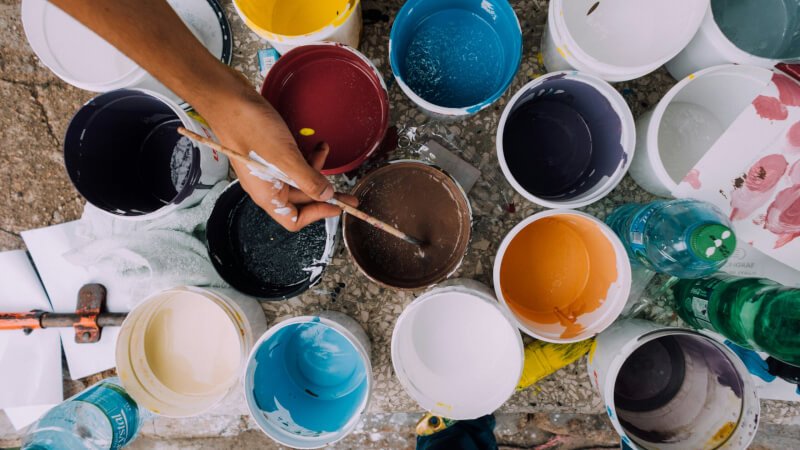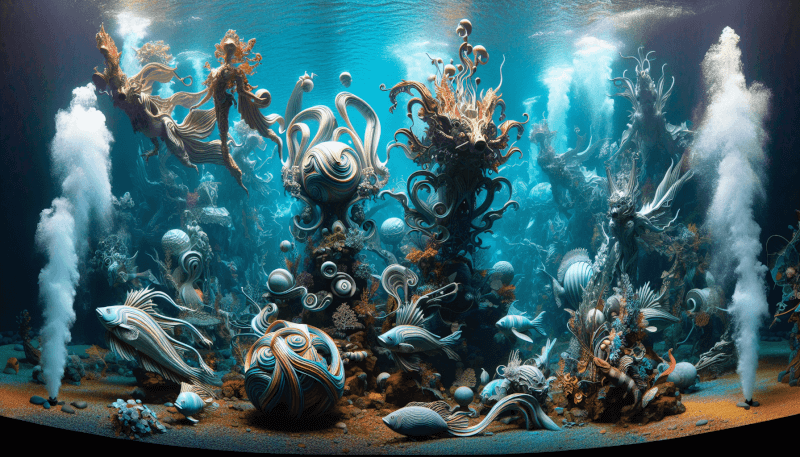Step into a world where artistry meets aquatic enchantment and explore the allure of underwater sculptures and art in the realm of aquarium aesthetics. Immerse yourself in a captivating display of creativity and beauty as you discover how these submerged masterpieces transform the underwater landscape, creating a mesmerizing environment that enchants both spectators and marine life alike. From intricate sculptures that mimic coral reefs to stunning installations that tell stories of environmental preservation, the marriage of sculpture and the aquatic realm unveils a visual spectacle that truly captivates the senses. So, join us on this immersive journey as we delve into the mesmerizing world of underwater sculptures and art, and uncover the inherent magic they bring to aquarium aesthetics.
Introduction
Aquariums are not just about showcasing marine life; they are also about creating a visually captivating underwater world. The aesthetics of an aquarium play a crucial role in the overall experience for visitors. In recent years, there has been a rising popularity in incorporating underwater sculptures and art into aquariums. These unique installations not only enhance the beauty of the underwater environment but also contribute to the well-being of marine life. This article will explore the concept of underwater sculptures, their various types, the materials and techniques used, their effect on marine ecosystems, and famous examples from around the world. Additionally, it will delve into the educational and conservation opportunities provided by underwater art, as well as the challenges faced in maintaining these captivating installations.
The Concept of Underwater Sculptures
Underwater sculptures are a manifestation of art in an artificial aquatic setting. They aim to emulate the beauty of nature and create a visually pleasing experience for aquarium visitors. These sculptures can be made from various materials and often incorporate elements of marine life into their design. The integration of sculptures with the aquatic environment blurs the line between art and nature, providing a unique and immersive experience.

Enhancing Aquarium Aesthetics with Art
The integration of art into aquariums goes beyond aesthetics. Underwater sculptures have the power to create a visually captivating underwater world that leaves a lasting impression on visitors. These installations not only enhance the overall atmosphere of the aquarium but also promote the well-being of marine life. The intricately designed sculptures provide shelter, hiding places, and breeding grounds for aquatic organisms, contributing to the ecological balance within the aquarium.
Types of Underwater Sculptures
There are various types of underwater sculptures that can be found in aquariums around the world. Traditional sculptures, such as replicas of ancient statues or sculptures inspired by classical art, add a touch of history and culture to the underwater environment. On the other hand, modern and contemporary installations push the boundaries of creativity, often incorporating abstract and unconventional designs. Interactive sculptures, where visitors can physically engage with the artwork, take the immersive experience to another level. Some aquariums even feature underwater museums, where a collection of sculptures and artworks are displayed underwater, creating a truly captivating experience for visitors.

Materials and Techniques Used
Creating underwater sculptures requires durable materials that can withstand the harsh underwater environment. Materials such as bronze, stainless steel, and concrete are commonly used due to their resistance to corrosion. Molding and casting techniques are employed to create intricate sculptures that mimic the natural forms of marine life. Additionally, innovative technology, such as 3D printing, is being increasingly utilized in the creation of underwater art, allowing for more intricate and detailed designs.
Effect on Marine Ecosystems
Underwater sculptures have a significant impact on marine ecosystems. They provide shelter, breeding sites, and food sources for marine life, acting as artificial reefs. These sculptures attract various species of fish, coral, and other marine organisms, promoting biodiversity within the aquarium. Additionally, underwater sculptures can contribute to habitat restoration efforts, providing alternative habitats for marine life in areas affected by human activities. However, it is crucial to consider the environmental implications and ensure sustainability when creating and maintaining these sculptures.

Famous Underwater Sculptures and Artworks
The Museum of Underwater Art in Australia is a prominent example of the fusion of art and marine life. Located on the Great Barrier Reef, it features a collection of underwater sculptures by renowned artist Jason deCaires Taylor. These sculptures, made from concrete and stainless steel, not only enhance the aesthetics of the underwater environment but also convey powerful messages about environmental conservation. Another famous example is the Yonaguni Monument in Japan, an underwater structure that is subject to debate, with some arguing it is a man-made creation and others considering it a natural formation. Its mysterious nature continues to allure divers and researchers from around the world.
Aquarium Aesthetics: Beyond Beauty
Underwater sculptures not only create a visually appealing environment but also offer educational opportunities for visitors. These installations serve as a platform to educate and raise awareness about marine life, conservation efforts, and the importance of protecting our oceans. By immersing visitors in an underwater world that combines art and nature, aquariums can effectively communicate the need for sustainable practices and inspire action towards preserving our marine ecosystems.

Challenges in Maintaining Underwater Art
Maintaining underwater sculptures requires regular cleaning and maintenance. Algae, which can quickly accumulate on the surfaces of sculptures, needs to be removed to maintain the visual appeal of the artwork. Additionally, corrosion caused by the saltwater environment poses a challenge that requires continuous monitoring and treatment. Furthermore, the presence of marine life on the sculptures can cause potential damage; therefore, proper measures need to be taken to protect both the artwork and the marine organisms.
Conclusion
The allure of underwater sculptures and art in aquarium aesthetics is undeniable. These installations enhance the visual appeal of the underwater environment, promoting an immersive and captivating experience for visitors. While adding beauty, underwater sculptures also serve as valuable habitats for marine life, contributing to ecological balance and conservation efforts. As technology and creativity continue to advance, the possibilities for innovation and exploration in aquarium aesthetics are endless. By embracing this combination of art and nature, aquariums have the power to educate, inspire, and motivate individuals to become stewards of our precious marine ecosystems.


